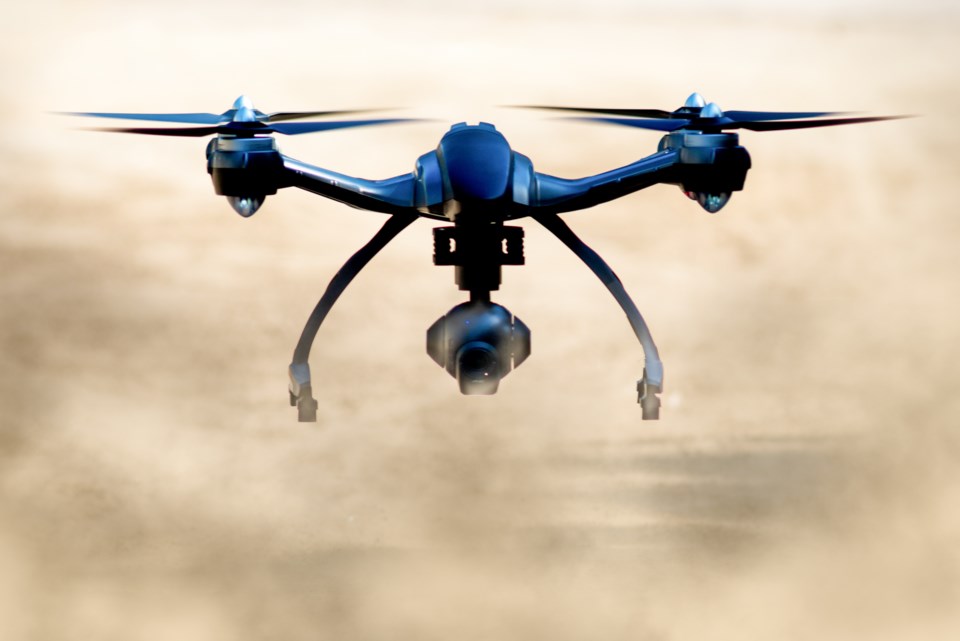Drones will take to the sky delivering medical supplies to the Stellat’en First Nation after a team from UBC’s Faculty of Medicine has partnered on a pilot project with the remote Indigenous community more than 100 kilometres west of Prince George.
Chief Robert Michell believes drone technology could reduce the risk of exposure to COVID-19 while enhancing access to essential supplies.
“Based on the isolated location of our community and the needs of our residents, drone transport may enhance our access to COVID-19 testing and medication without traveling and endangering other members of our community,” Michell said in a news release.
Lockdowns in First Nation communities have exacerbated inequitable access to health care supplies and services such as testing.
The chief’s remote, locked down community is surrounded by forest and accessible only by a rural road.
Michell said members belonging to one household all had to self-isolate, resulting in an outside member having to retrieve medications for them.
Provincial Health Officer Dr. Bonnie Henry cautioned Wednesday (Jan. 27), the more people you see and the more places you go, the higher the risk is to you and those around you which is why gatherings of any size are on pause.
“Drone technology will eliminate the human factor,” said Michell.
To explore enhancing equity of access to health services, the UBC Faculty of Medicine will deploy drone technology to fly necessary health care supplies into Stellat’en after receiving a $750,000 grant from the TD Ready Challenge.
According to UBC, an unmanned drone carrying supplies will make the six-kilometre trip between Fraser Lake and the Stellat’en First Nation twice daily, five days a week over the next year.
“As we got into this pandemic, it became obvious that creating access for remote communities has become more important, and trying to get supplies in and out of those communities beyond the historical ways of driving in, driving out, or flying in or flying out,” said Dr. John Pawlovich, who is one of the project’s leaders.
“What we hope is that this will open the door for not just the short term work but longer-term aspirations around continuing to learn and understand how this technology as it matures and advances with time can benefit these rural and remote communities, and scale it across the province,” Pawlovich added.
Michell believes drone technology could provide limitless opportunities for his on-reserve community of approximately 250 members and get Stellat’en young adults interested in completing the drone pilot program.
He recalled a drowning within the nearby river system, which is inaccessible by boat.
“If we had drone technology, we could have listed it off fairly quickly and scan the river system to see where he went in and where he was,” Michell said.
As a new season approaches, the chief cannot wait to see the project in action.
”It’s kind of like a fascination,” Michell said.
“You watch it on TV, and you always wonder how it’s going to work in real life, so I guess we’ll find out this spring.”


